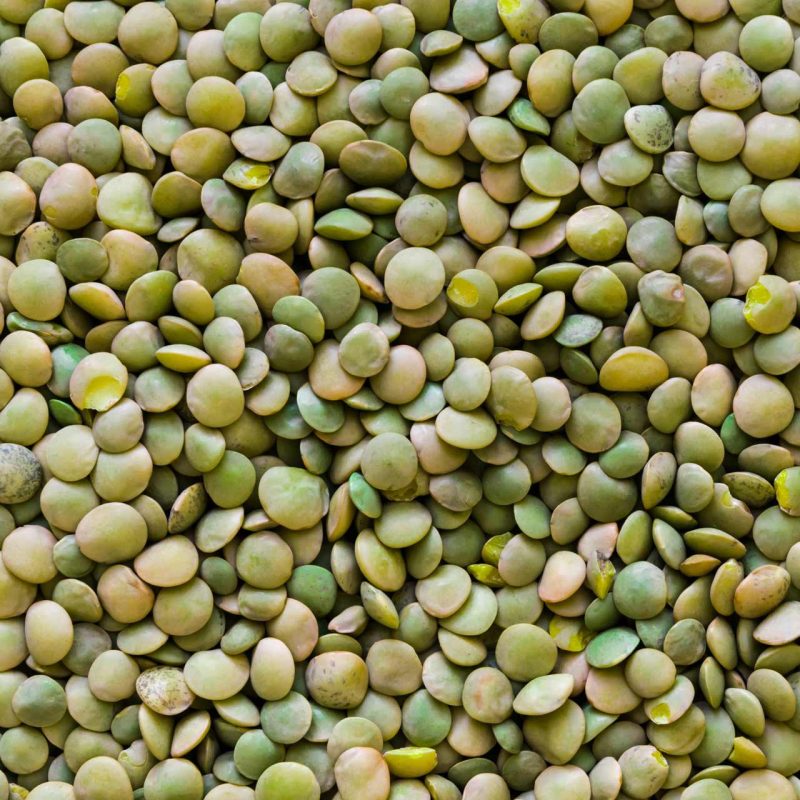YETRAC
Comprehensive Guide to Lentil Cultivation: Planting, Care, and Harvesting Tips
Comprehensive Guide to Lentil Cultivation: Planting, Care, and Harvesting Tips
Lentils, a prominent member of the legume family, have gained significant importance in dietary routines due to their high protein content. Cultivated in both dry and wet regions through crop rotation practices, lentil cultivation offers advantages to both farmers and the national economy. Lentils, with various varieties grown in different seasons, allow for year-round cultivation.
Soil Preparation
Attention to detail is crucial when preparing the soil for lentil cultivation. Since the initial growth stage of the crop is fragile, it is cultivated in soils completely free of weeds. The seedbed should be free of stubble, and the soil should be shallowly tilled, with care taken not to soften the seedbed or disturb live root channels. If lentils are to be cultivated after winter grains, the first soil cultivation is done after grain harvest, and the first rain is awaited. Some farmers perform the first cultivation after the initial rains. Second and shallow cultivation prepares the seedbed, considering the region’s conditions, aligned with the sowing time.
When to Plant Lentils
In the Southeastern Anatolia Region, red lentils are cultivated as winter crops, while green lentils are grown as summer crops in the Central, Eastern, and Western Anatolia regions. Winter varieties, suitable for enduring even extremely cold weather, allow for winter cultivation in the Southeast, coastal areas, transitional regions, and Central Anatolia. Summer cultivation is preferred in some parts of Central and Eastern Anatolia, as well as transitional regions. Winter sowing takes place in the second half of October and in November, while summer sowing is considered suitable in January, February, and March, not extending beyond April. Opting for winter sowing is recommended for higher grain yield, but attention should be paid to weed control for sufficient yield.
How to Plant Lentils
Lentil cultivation is commonly done by broadcasting on sloped and stony terrains. In suitable areas, a cereal drill is used for row planting. Pressing the soil during sowing enhances seed fertility. The optimal planting density for lentils is calculated at 15 x 2.5 – 5 cm. Planting depth should be 4-5 cm. According to Ankara University sources, the seed quantity per square meter ranges from 150 to 250 for winter varieties and 200 to 300 for summer varieties.
Fertilization in Lentil Cultivation
Nitrogenous fertilizers do not yield significant reactions in lentil cultivation. Diversification is preferred for high yield. Per hectare, 4 kilograms of N and 4 kg of P2O5 are applied, along with 3-4 kg of K2O and 10-15 kg of lime, based on Ankara University recommendations.
Considerations in Lentil Cultivation
- Weed control before sowing and proper field preparation reduce the need for additional care during lentil cultivation.
- The initial growth stage of lentils is slow, and higher temperatures are required for the first development.
- Early weed removal is crucial for achieving high yields, and performing weed removal at least once during the initial growth stage is recommended. If done twice, even higher yields can be observed.
Pest and Disease Control
- Pre-sowing pesticide applications for weed control are viable, but excessive chemical use should be avoided.
- Lentils can be grown under dry conditions, and excessive watering should be avoided, as lentils are sensitive to excess water.
- If the season is excessively dry, occasional irrigation may be necessary.
Common Pests and Diseases
- Lentil aphids and lentil weevils are among the most common pests affecting lentil cultivation. Aphids feed on the leaves and grains, while weevils can cause significant damage during the initial growth stages.
- Root rot can occur in lentils, particularly in poorly leveled fields with water accumulation.
- Mildew is a prevalent disease, and early intervention is crucial. Regular and detailed monitoring is advised.
Harvesting Lentils
- Due to the uneven ripening of lentils, mechanical farming is not commonly preferred, as the short and prostrate nature of the plant hinders machine farming.
- Harvesting is typically done manually by sickle, scythe, or mowing machines. Tractor-pulled machinery and combine harvesters can also be used by some farmers.
- Harvesting should ideally take place in the morning to minimize grain loss. Delayed harvesting can result in a 50% loss in grain yield.
- Harvested lentils are dried for 7-10 days, then transported to threshing sites, threshed, and bagged. Lentils can be stored immediately for sale or stored in warehouses that provide suitable conditions for legume storage.
Lentil cultivation is a rewarding endeavor that, when managed with care and attention to detail, can provide farmers with a valuable source of income. Implementing proper soil preparation, choosing the right varieties, and adhering to recommended cultivation practices are key factors in ensuring a successful lentil harvest. Regular monitoring for pests and diseases, along with timely interventions, contributes to the overall health and productivity of the lentil crop. By embracing sustainable and efficient cultivation practices, farmers can optimize their yields and contribute to the robustness of the agricultural sector.

